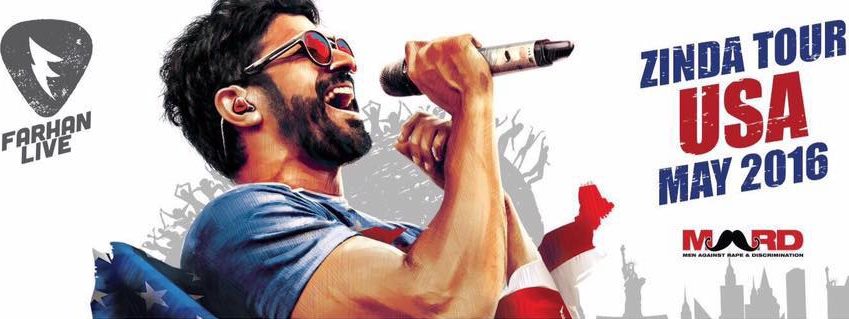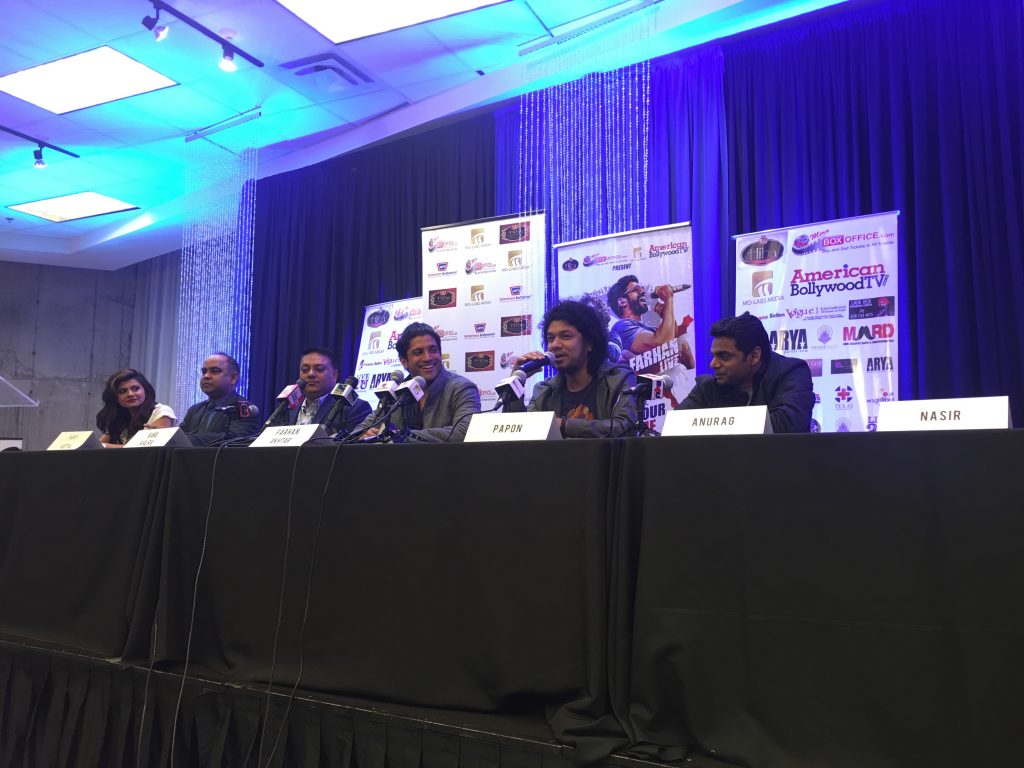
by Sarah Khan
I’ve always considered myself somewhat of a Farhan Akhtar fan, like yeah, I can name some of his movies and songs – and that’s about it. But wow, on Thursday night, I fell in love with the man. He was so witty and positive throughout the entire press conference I attended in Dallas for his Zinda Tour 2016, which is his first-ever, six-day U.S. tour with his band, Farhan Live.
 [Farhan Akhtar and his team at Thursday night’s press conference. | Photo Courtesy of Sarah Khan]
[Farhan Akhtar and his team at Thursday night’s press conference. | Photo Courtesy of Sarah Khan]
Pleased to announce our first ever US tour… Dates & Cities listed below. Details to follow.. Shine On!! pic.twitter.com/5lDveklYsr
— Farhan Akhtar (@FarOutAkhtar) February 23, 2016
“Hi Farhan! I’m Sarah from Brown Girl Magazine. You’ve had other actors sing with you on tracks, who surprised you the most and why?”
“The most fun I’ve had was with Hrithik and Abhay. I have to think about this question because I’ve never been asked this before.”
“So for ‘Rock On!! 2,’ we really wanted the female lead to sing her own songs. We all know Shradda [Kapoor] can sing but I never knew how well. She is so talented!”
“I’ve told her to focus on her singing, don’t let that go to waste! She has definitely surprised me the most.”
Akhtar also spoke about the social campaign he launched in 2013, MARD – Men Against Rape and Discrimination. Being the feminist he is, listen to a snippet of a poem he recited in Urdu at the press conference.
Akhtar, you really do have a way with words and your voice is literally like “honey on sand paper.”
P.S. Farhan, if you’re reading this, “Dil Chahta Hai” sequel?
 Sarah Khan is aspiring to be Sharmila Tagore with the swag of Aaliyah. She is 23-years-old and her mom won’t stop asking her about marriage. Sarah usually ends up telling her mom that she wants to marry an African-American Jew, which causes her mother to promptly throw chappals at her. Sarah wants Drake to know that she’s down and ready whenever he is. Sarah is also 257 Pokemon away from catching them all.
Sarah Khan is aspiring to be Sharmila Tagore with the swag of Aaliyah. She is 23-years-old and her mom won’t stop asking her about marriage. Sarah usually ends up telling her mom that she wants to marry an African-American Jew, which causes her mother to promptly throw chappals at her. Sarah wants Drake to know that she’s down and ready whenever he is. Sarah is also 257 Pokemon away from catching them all.




